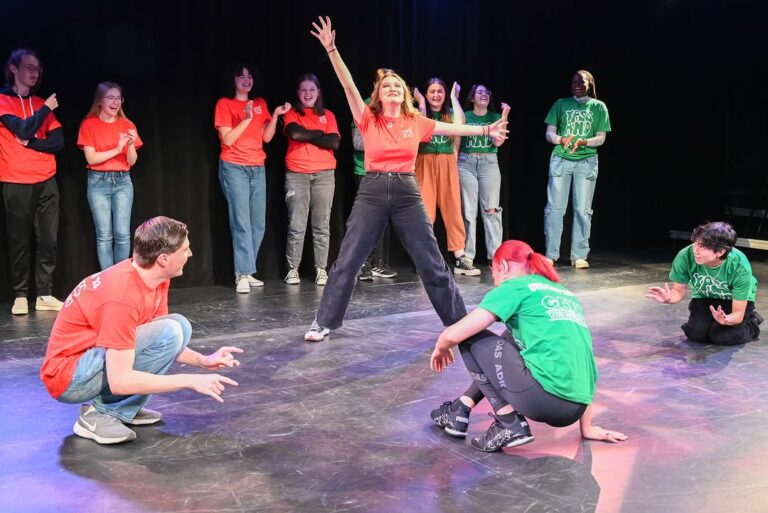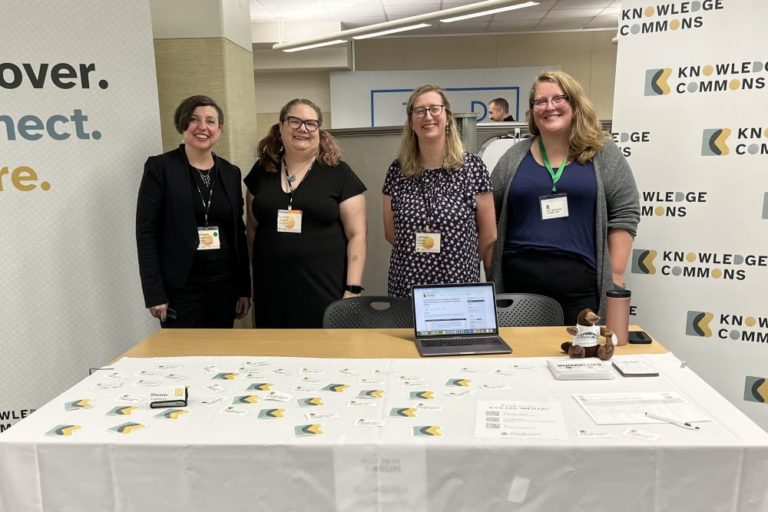Sean Pue focuses on strengthening connections between data science and the humanities. Lately, the College of Arts & Letters researcher has been using digital technologies to interpret and annotate the poetics of Indian literature circulated online through texts, manuscripts, sound, and video.
“Poetry is a very vibrant mode of expression in South Asia,” said Pue, Associate Professor of Hindi Language and South Asian Literature and Culture. “People across social classes exchange poems on a daily basis through apps as well as at large festivals and other public gatherings.”
One of our aims is to build the capacity for digital humanities research and teaching in India. Although present in a number of Indian universities, the discipline is still emerging as a whole.
SEAN PUE, ASSOCIATE PROFESSOR
Pue received an award from India’s Scheme for the Promotion of Academic and Research Collaboration (SPARC) with Professor Nishat Zaidi of the Jamia Millia Islamia (JMI) in New Delhi to support their collaborative work in the digital humanities. Administered by the Indian Institute of Technology Kharagpur, SPARC facilitates academic and research collaborations among higher educational institutions across India and top institutions from 28 nations worldwide.
Since March 2019, Pue has collaborated with scholars from JMI to develop digital resources while refining standards for digital critical editions for Indian poetries. He taught a seminar on digital humanities at JMI in December, and in February, graduate student scholars Zahra Rizvi and Asra Mamnoon came from JMI to work with Pue and study Digital Humanities at MSU. Later this year, Pue will travel to JMI to teach and organize a conference on “Digital Apprehensions of Poetics.”
“One of our aims is to build the capacity for digital humanities research and teaching in India,” Pue said. “Although present in a number of Indian universities, the discipline is still emerging as a whole.”
Bridging Disciplines
Digital humanities focuses on preserving, understanding, and making humanities accessible through the systematic use and analysis of computing and digital technology.
The discipline’s focus on cultural preservation, Pue said, is of particular interest in India where poetry and poetic expression are incredibly popular and increasingly delivered through digital and social media platforms.

“Poetry circulates primarily through social media in South Asia,” Pue said. “A lot of the best, or most celebrated, living poets share their work on Facebook.”
Pue, Rizvi, and Mamnoon are examining how to use digital tools to explore poetry and poetics and how to annotate poetry distributed through social media. The team also is leveraging the power of computational modeling to develop an interactive guide to poetics organized by keywords.
Outcomes from the project will become part of an overarching effort to broaden digital humanities programs at JMI. Mamnoon said the project management expertise and digital scholarship methodology she has acquired at MSU will be particularly helpful.
What’s so interesting in India is the way that poetry circulates through social media along with images and video. By analyzing and annotating that cultural record, we’re hoping to help aspiring writers and poets get a better grasp of different poetic traditions.
SEAN PUE, ASSOCIATE PROFESSOR
“I believe the tools we have learned here are going to be handy in preparing both ourselves as well as our team in India to work on deliverables,” Mamnoon said. “We have a team of research scholars and faculty back home who are working on monographs that will stem out of our training here in the field.”
Rizvi agreed. She said the archives and libraries at JMI are conducive to digital approaches and that the methodology she has learned at MSU will help her colleagues further expand and organize their effort.
“The Digital Scholarship Lab at the MSU Library was wonderfully helpful with professionals guiding us in project management and digital humanities practices,” she said. “A lot of what we learned and experience here can be imparted to interested folks at JMI, which would mean a small revolution in the way humanities projects can be pursued at our university.”
Taking Pages from Science
Pue’s project is well underway as the team focuses on modeling and visualizing the poetics of Indian language literature. Similar to hard sciences, the team will conduct experiments to determine the most effective modes of computer-assisted analysis to convey poetics to new generations of students and scholars.
“Our methodologies are comparable to those used in the disciplines like computational biology,” Pue said. “But instead of the natural sciences, digital humanities deals with literature, film, art, history, popular culture, media and communication, and other areas.”
In the end, Pue said the specific project funded through SPARC aligns with the broader goal of digital humanities: to organize and make information accessible to more people.
“What’s so interesting in India is the way that poetry circulates through social media along with images and video,” Pue said. “By analyzing and annotating that cultural record, we’re hoping to help aspiring writers and poets get a better grasp of different poetic traditions. It’s a whole big world we’re interested in exploring through cultural analytics.”


